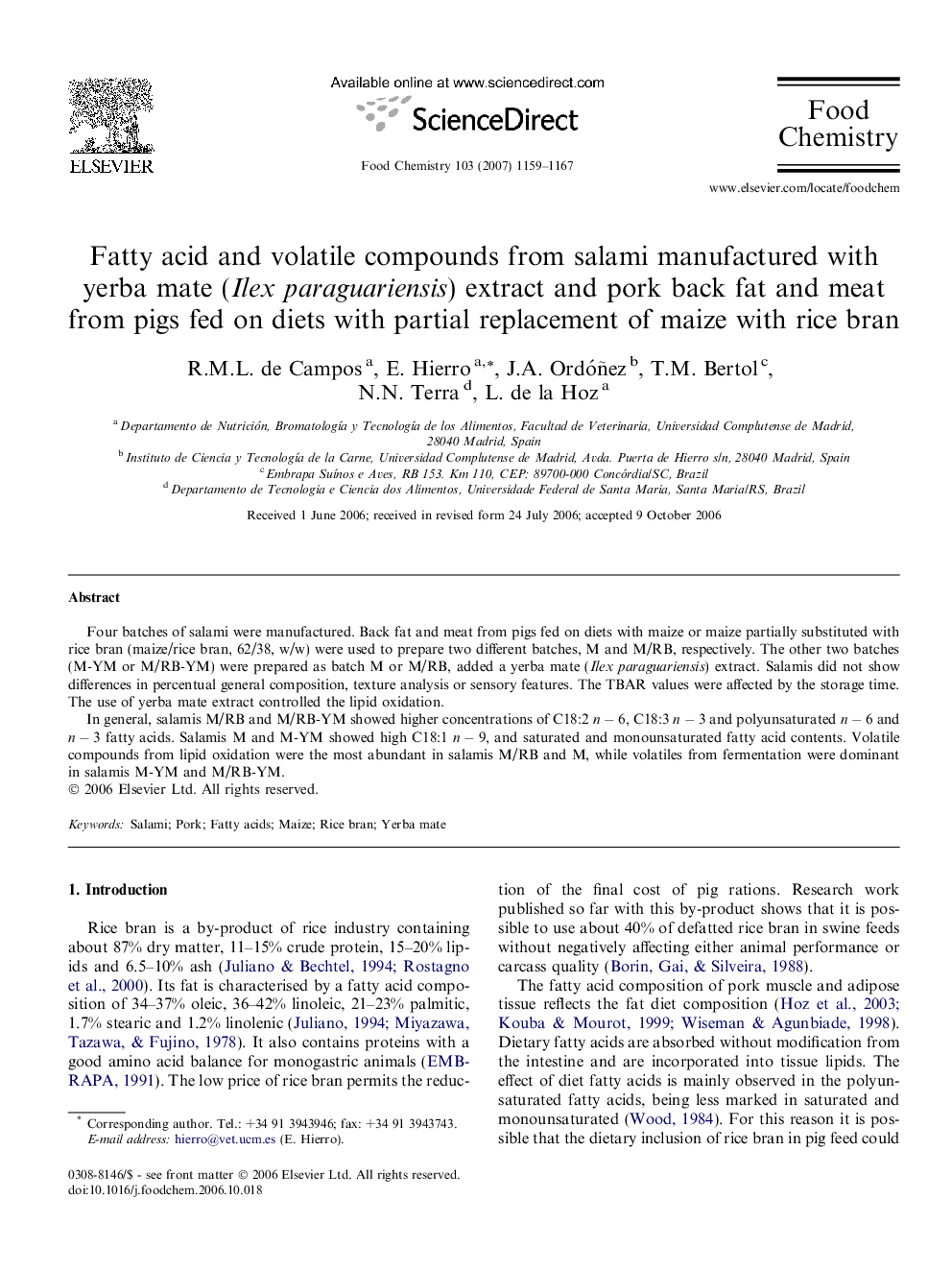| Article ID | Journal | Published Year | Pages | File Type |
|---|---|---|---|---|
| 1190322 | Food Chemistry | 2007 | 9 Pages |
Four batches of salami were manufactured. Back fat and meat from pigs fed on diets with maize or maize partially substituted with rice bran (maize/rice bran, 62/38, w/w) were used to prepare two different batches, M and M/RB, respectively. The other two batches (M-YM or M/RB-YM) were prepared as batch M or M/RB, added a yerba mate (Ilex paraguariensis) extract. Salamis did not show differences in percentual general composition, texture analysis or sensory features. The TBAR values were affected by the storage time. The use of yerba mate extract controlled the lipid oxidation.In general, salamis M/RB and M/RB-YM showed higher concentrations of C18:2 n − 6, C18:3 n − 3 and polyunsaturated n − 6 and n − 3 fatty acids. Salamis M and M-YM showed high C18:1 n − 9, and saturated and monounsaturated fatty acid contents. Volatile compounds from lipid oxidation were the most abundant in salamis M/RB and M, while volatiles from fermentation were dominant in salamis M-YM and M/RB-YM.
